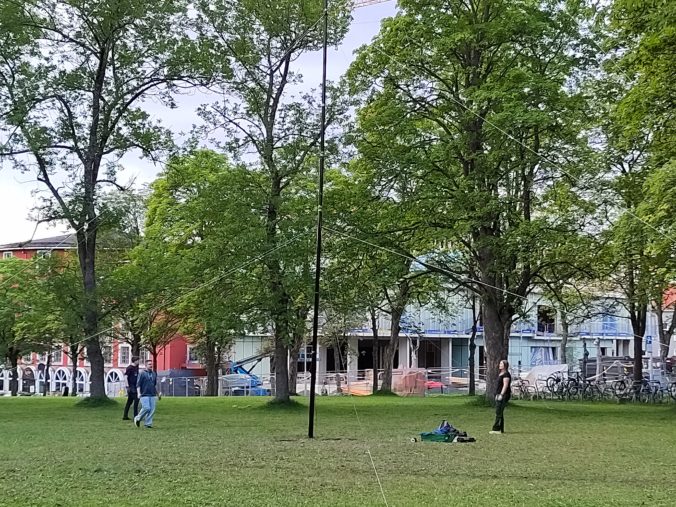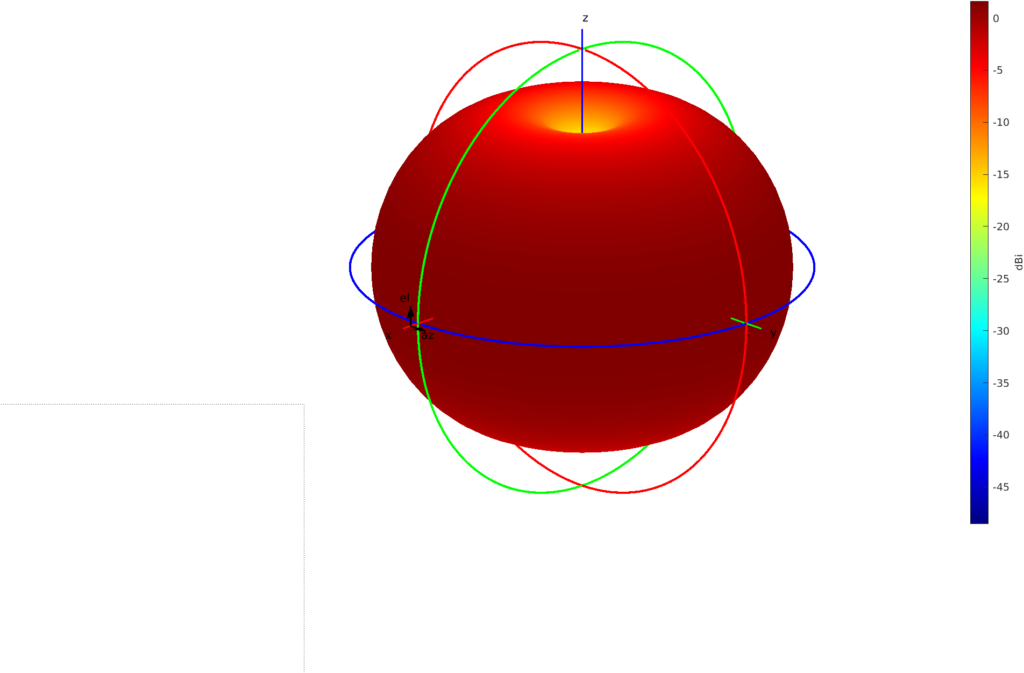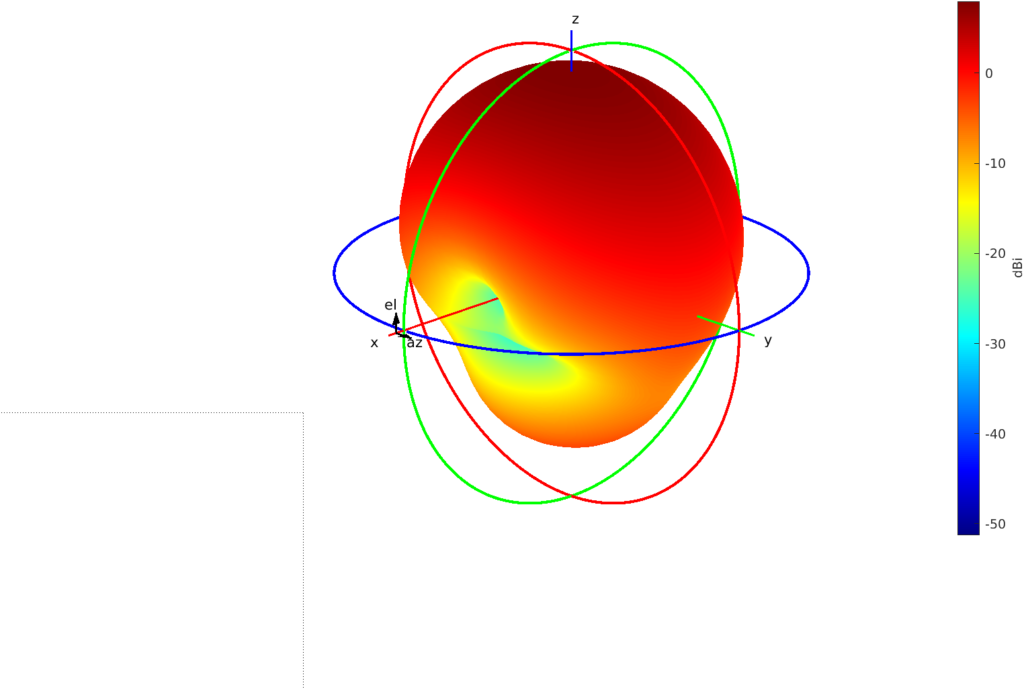In our strive for better 80m antennas, the size is an ever-recurring problem. For many years, we have been using wire dipoles, both for Field Day and at our permanent QTH. Dipoles are typically efficient antennas, but if they are hung too low, they tend to transmit most of the power straight up. This is great for NVIS (Near vertical incidence skywave), but suboptimal for long-distance QSOs, which is what we are trying to achieve during Field Day.
A simple antenna with a low takeoff angle is the quarter wave vertical. In fact, we have a BigIR adjustable length vertical with a base load coil, which covers 80m, at our permanent QTH. However, for Field Day, we would need a portable vertical. One option would be to use a base load on our 12m Spiderbeam mast, but that would considerably reduce efficiency compared to a full-size vertical. Fortunately for us, Spiderbeam offers longer masts, so we bought their 26m version, and decided to make a full-length quarter-wave 80m vertical antenna.

From left: LB5FJ, Christian and Randi. Photo: LB5DH
On the last Sunday before Field Day, we met to make the new antenna and get familiar with the new mast. In a somewhat chaotic process, we cut 100m wire into five equally long pieces 20m piece, one element, and four radials. We did not know the velocity factor of the antenna wire, but we hoped that 20 meters would be enough for the element.
Since we didn’t know the ground plane conditions at the Field Day QTH, we used elevated radials. To elevate the low ends, we elongated them with flag lines. We also used flag lines as guy wires. Since the Dyneema ropes that Spiderbeam recommends are stronger than the silk line-made flag line, we had to use larger dimensions than the recommended ones. It was still cheaper and more readily available than Dyneema ropes.

We then raised the mast, which was surprisingly easy, considering how tall it was. LB1DJ had made some guy wire adjusters, but we forgot to mount them before the first attempt. This made it quite impractical to erect the antenna, but we mounted them afterward. They were especially useful when hoisting the last four segments simultaneously with loosening the guy wires.

When the antenna was erected, we fortunately discovered that the element and the radials were long enough. In fact, the element turned out to be too long. After some on-the-spot calculations, we took down the mast and adjusted the length of the element. The SWR was slightly better but not perfect. We made a final adjustment and packed it down for Field Day.

From left: LB5FJ and Randi. Photo: LB5DH
This is, as far as we know, the tallest mast and antenna that ARK has ever used during Field Day – a no-compromise full-size quarter wave vertical antenna. We expected it to have superior TX low-angle performance but were less sure about the RX performance. With a low takeoff angle, we are susceptible to noise from the surroundings, and since this antenna is omnidirectional, it takes up noise from all directions.

Photo: LB5DH
During Field Day, we set up the new vertical and the old dipole, although we mostly used the new vertical. It worked great, and we will be using it next year as well.
Many thanks to Randi, Christian, LB5FJ, and LB5DH for making and testing the antenna, and LB1DJ for making the awesome guy wire winders!

From left: LB5FJ, Christian and Randi. Photo: LB5DH




0 Comments
2 Pingbacks